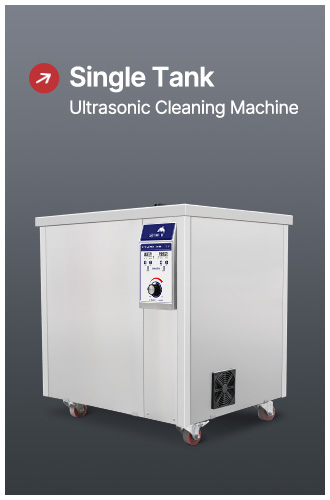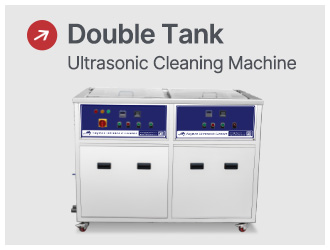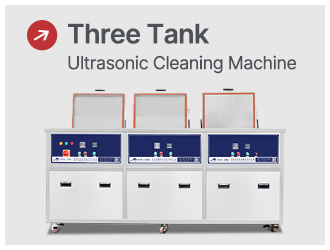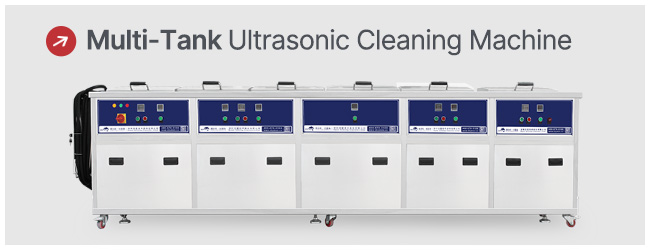In modern industrial production, ultrasonic cleaning machines have gained market favor due to their efficient, convenient, and environmentally friendly cleaning methods. They are particularly effective for cleaning complex surfaces, such as uneven, blind-holed mechanical parts, and small products with high cleanliness requirements, such as watches and precision mechanical parts, electronic components, and circuit board assemblies. Let's delve into the main parameters of ultrasonic cleaning machines and their types.
Principle of Ultrasonic Cleaning Machines
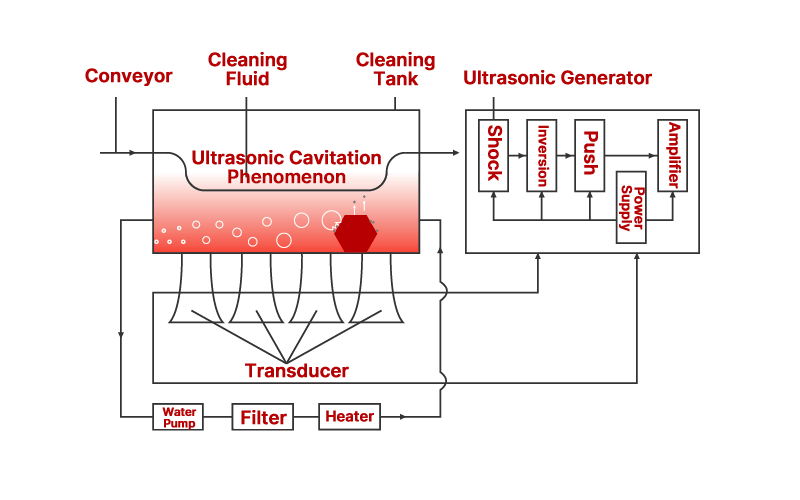
Ultrasonic cleaning machines utilize high-frequency vibrations generated by ultrasonic waves in a cleaning solution to form countless tiny bubbles. These bubbles burst instantaneously, producing energy that can strip away dirt, thus achieving the cleaning purpose. Ultrasonic cleaning machines offer high cleaning efficiency, fast cleaning speeds, and good cleaning results without damaging the surface of the objects.
Parameters of Ultrasonic Cleaning Machines
1. Cleaning Frequency
- Cleaning frequency, measured in kHz (kilohertz), is a crucial parameter. Common frequencies include 28kHz, 40kHz, 80kHz, and 120kHz.
- Generally, low frequencies (20kHz - 40kHz) are suitable for cleaning larger, harder objects like metal parts and mechanical components due to their strong penetration power. High frequencies (60kHz and above) are better for smaller, more delicate objects like electronic components and optical lenses, providing a more refined cleaning effect without surface damage.
2. Power Size
- The power of ultrasonic cleaning machines is usually measured in watts (W). The power size directly affects the cleaning effect and speed.
- Higher power leads to better cleaning effects and faster speeds. However, prolonged high-power density cleaning can cause "cavitation" corrosion on the surface of delicate objects, affecting their quality and performance, and increasing energy consumption and noise.
3. Tank Capacity
- The cleaning tank dimensions refer to the length, width, and height of the ultrasonic cleaning machine's cleaning tank, typically measured in millimeters (mm).
- The size of the cleaning tank determines the size and quantity of objects that can be cleaned. It is essential to choose the right tank size based on the actual dimensions of the objects to ensure complete immersion in the cleaning solution.
4. Temperature Control
- Some ultrasonic cleaning machines have temperature control features that can adjust the temperature of the cleaning solution within a certain range.
- Higher temperatures can accelerate the chemical reactions of the cleaning solution, improving cleaning effects. However, excessively high temperatures may damage the objects and increase energy consumption and safety risks.
5. Time Control
- Ultrasonic cleaning machines usually have time control features that allow setting the cleaning duration, ranging from a few minutes to several tens of minutes.
- Proper setting of cleaning time ensures the cleaning effect and prevents over-cleaning that could damage the objects.
Types of Ultrasonic Cleaning Machines
Ultrasonic cleaning machines can be categorized by use into industrial, commercial, laboratory, and household ultrasonic cleaning machines. Industrial ultrasonic cleaning machines are mainly used for large-scale cleaning operations in industrial production, capable of cleaning various mechanical parts, hardware stamping parts, automotive components, etc. These machines typically have high power and capacity, high cleaning efficiency, and can adapt to high-intensity continuous cleaning operations. They often feature multi-tank designs, including cleaning, rinsing, and drying tanks, to achieve automated cleaning processes and increase production efficiency.
Application Fields

|
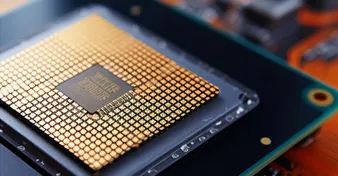
|
|
automaitec
|
medical
|
Ultrasonic cleaning machines have a wide range of applications in the industrial field. For example, in mechanical manufacturing, they are used to clean bearings, gears, engine blocks, and other mechanical parts, removing oil, iron filings, and dust to improve assembly quality. In the automotive manufacturing industry, they clean engine components, transmission parts, brake system parts, etc., removing oil and carbon to ensure the reliable performance of automotive components. In the electronics industry, they clean electronic components, circuit boards, semiconductor devices, etc., removing solder slag, flux, and oil to improve the quality of electronic products. In the aerospace field, they clean aircraft engine parts, aviation instruments, spacecraft components, etc., to ensure the safe operation of equipment. In hardware processing, they clean hardware stamping parts, castings, forgings, etc., removing surface oil, oxide scale, and rust to improve the surface quality of hardware products.
The settings of ultrasonic cleaning machines directly affect the cleaning effect. When selecting an ultrasonic cleaning machine, it is necessary to consider factors such as the size, quantity, degree of dirt, and cleaning requirements of the objects to be cleaned, and choose the appropriate parameters and types to achieve the best cleaning effect.

